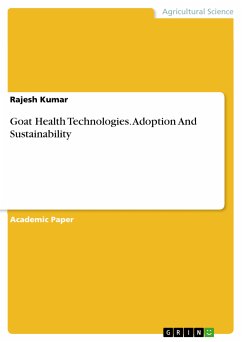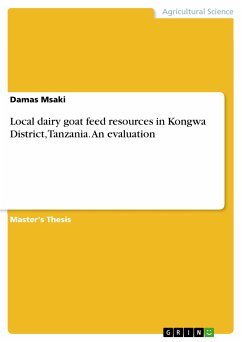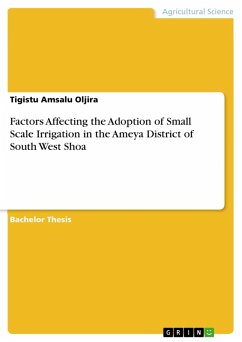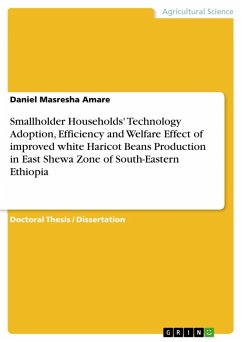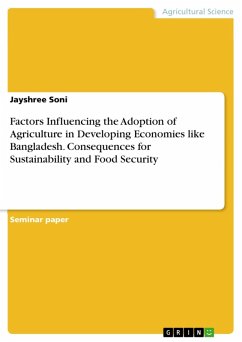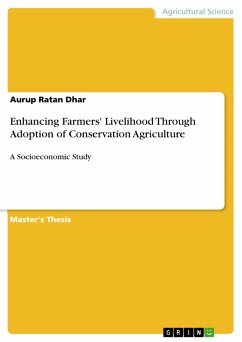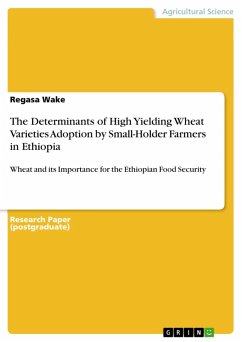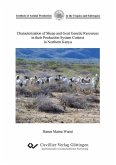Academic Paper from the year 2021 in the subject Agrarian Studies, grade: 8, , language: English, abstract: The broad objective of the study was to find out the extent of adoption and sustainability of selected goat health technologies at farmer's level. The present study was conducted in purposively selected six districts from all the three agro-climatic zones of Bihar. All the three zones were selected for the study. Two districts were selected from each zone on the basis of highest density of goat population. From each selected district, two blocks were selected randomly to make a total of 12 blocks and from each block two villages were selected randomly, to make a total of 24 villages. The respondents who owned at least 5 goats were selected randomly in a way to make a sample size of 240. From each zone 20 faecal samples were also collected randomly for the parasitic load identification in goats. Data were collected through personal interview schedule incorporating all relevant dimensions. Interaction dialogue, secondary sources as well as observations were the other techniques of data collection. Majority of the farmers were middle aged, with medium level of goat farming experience, had not taken any kind of training related to goat farming characterised by low level of social participation, poor and socially disadvantaged groups had medium extension agency contact. Chi-square analysis showed the non significant relation between independent variables and categories of zones. Majorities of the farmers had small flock size, were landless farmers, were in medium income category and had medium knowledge level.
Dieser Download kann aus rechtlichen Gründen nur mit Rechnungsadresse in A, B, BG, CY, CZ, D, DK, EW, E, FIN, F, GR, HR, H, IRL, I, LT, L, LR, M, NL, PL, P, R, S, SLO, SK ausgeliefert werden.

